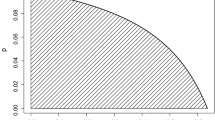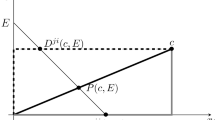Abstract
In this paper we investigate the relationship betweencosts and number of bidders for U.K. local authorities'refuse collection contracts. We find that a highernumber of bids is associated with a lower cost ofservice. This finding, as well as being an importantempirical verification of standard proposition inauction theory, has important policy implications. TheU.K. Labour government elected in 1997 has abolishedCompulsory Competitive Tendering (CCT). Our findingsindicate that this would increase local authorities'expenditure in refuse collection.
Similar content being viewed by others
References
Brannman, L., D. Klein, and L. Weiss (1987) ‘The Price Effects of Increased Competition in Auction Markets’, Review of Economics and Statistics, 69, 24–32.
BRMB (1995) CCT: The Private Sector View. London: HMSO.
CDC Research (1996) Contracts Handbook. CDC Publishing Limited.
Cubbin, J., S. Domberger, and S. Meadowcroft (1987) ‘Competitive Tendering and Refuse Collection: Identifying the Source of Efficiency Gains’, Fiscal Studies, 8(3), 49–58.
Domberger, S., S. Meadowcroft, and D. Thompson (1986) ‘Competitive Tendering and Efficiency: The Case of Refuse Collection’, Fiscal Studies, 7(4), 69–89.
Elyakime, B., J. J. Laffont, P. Loisel, and Q. Vuong (1994) ‘First-Price Sealed Bid Auctions with Secret Reservation Prices’, Annales D'Économie et de Statistique, 34, 115–141.
Giliberto, M., and N. Varaiya (1989) ‘The Winner's Curse and Bidder Competition in Acquisitions: Evidence from Failed Bank Auctions’, The Journal of Finance, 44, 59–75.
Gilley, O., and G. Karels (1981) ‘The Competitive Effect in Bonus Bidding: New Evidence’, Bell Journal of Economics, 12, 637–648.
Hendricks and Paarsch (1995) ‘A Survey of Recent EmpiricalWork Concerning Auctions’, Canadian Journal of Economics, 28, 403–426.
Laffont, J.J. (1997) ‘Game Theory and Empirical Economics: The Case of Auction Data’, European Economic Review, 41, 1–35.
McAfee, P., and J. McMillan (1987) ‘Auctions and Bidding’, Journal of Economic Literature, 25, 699–738.
Milgrom, P. (1979) ‘A Convergence Theorem for Competitive Bidding with Differential Information’, Econometrica, 50, 1089–1122.
Milgrom, P. (1989) ‘Auctions and Bidding: A Primer’, Journal of Economic Perspectives, 3(3), 3–22.
Milgrom, P., and R. Weber (1982) A Theory of Auctions and Competitive Bidding, Econometrica, 50, 1089–1122.
Riley, J., and W. Samuelson (1981) ‘Optimal Auctions’, American Economic Review, 71, 381–392.
Szymanski, S. (1996) ‘The Impact of Compulsory Competitive Tendering on Refuse Collection Services’, Fiscal Studies, 17(3), 1–19.
Wilson, R. (1977) ‘A Bidding Model of Perfect Competition’, Review of Economic Studies, 44, 511–518.
Author information
Authors and Affiliations
Rights and permissions
About this article
Cite this article
GóMez-Lobo, A., Szymanski, S. A Law of Large Numbers: Bidding and Compulsory Competitive Tendering for Refuse Collection Contracts. Review of Industrial Organization 18, 105–113 (2001). https://doi.org/10.1023/A:1026545306923
Issue Date:
DOI: https://doi.org/10.1023/A:1026545306923




